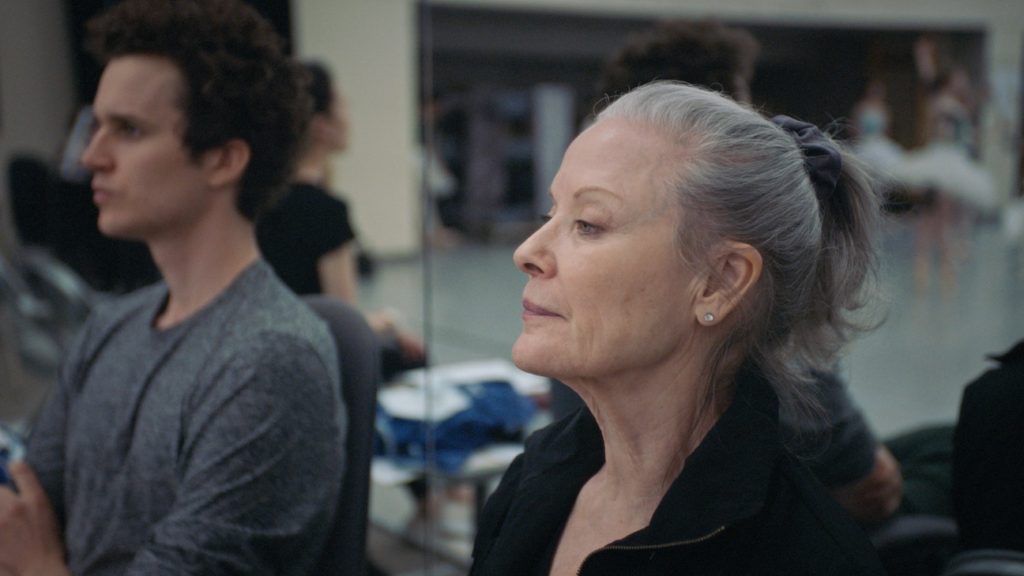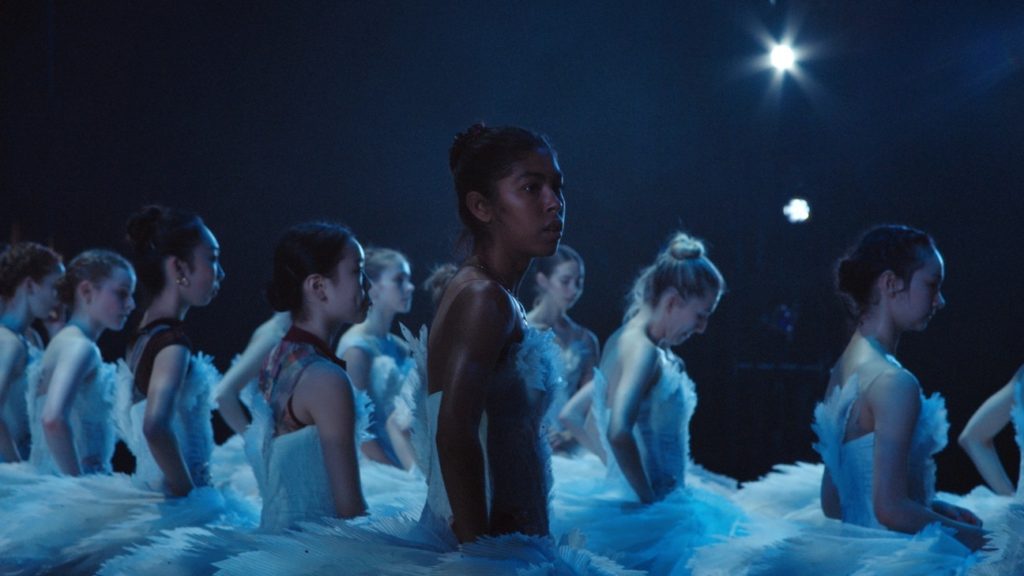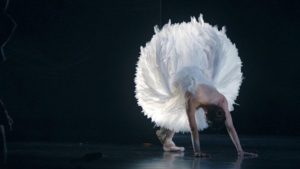Swan Song: Ultimately, it’s a celebration - Vancouver Ballet Society
- Home
- Reviews 2020 - 2023
- Swan Song: Ultimately, it’s a celebration

By Philip Szporer
Chelsea McMullan, the Toronto-based filmmaker, knows how to grab an audience’s attention. McMullan’s documentary series, Swan Song, on CBC-TV and CBC-Gem from November 22, 2023, starts out as a warm but predictable ode to Karen Kain’s career as she prepares to retire from her position as the National Ballet of Canada’s artistic director. As her final act, Kain is directing a new version of Swan Lake.
Early in the first episode, Kain is standing next to the Andy Warhol portrait of her, which she doesn’t seem to be terribly fond of. She gossips about being brought by Rudolf Nureyev, which whom she was dancing at the National Ballet, to a party at Warhol’s infamous Factory studio. She describes bowls of cocaine and caviar everywhere, then there’s a quick cut and no mention of whether she partook of the offerings. The pandemic hits and everything, including the filming, is suspended.

Two years later, the stage production is revived and the filmmakers return, creating what becomes a four-part series that is an engrossing look at the world of the National Ballet of Canada and some of its talented and fascinating dancers. Among the stars of the show — heroes, really — are pragmatic Russian-born, Lithuanian-raised principal dancer Jurgita Dronina and razor-sharp, rebellious corps de ballet dancer Shaelynn Estrada, from Texas.
Swan Song is also a feature-length documentary created for cinemas. McMullan mentions, in a Zoom interview, that while the TV series was always what they and co-creator Sean O’Neill envisaged, the film’s UK distributors, Dogwoof, required a film version in order to complete the project’s complex financing. I saw both formats, and the TV version, with cliffhangers at the end of each episode, really pulls the viewer in. Also, the film version predominantly follows the opening night cast, while the TV series dives into more characters and more drama, and that’s the version that I’m writing about here.
McMullan acknowledges being a “visual director,” compelled by art, artists, and the artistic process. This has led to documentaries on singer-songwriter Tanya Tagaq and musician Rae Spoon, as well as to Crystal Pite: Angel’s Atlas, titled after a work Pite created for the dancers of the National Ballet of Canada, plus a short dance-film, Slip, with Yvonne Ng.

Dance is difficult to capture effectively on camera. McMullan says you can’t treat dance as a straightforward live capture, which truly “sucks the life out of the performance.” The languages of each form — dance and film — need to be in conversation with each other. In Swan Song, McMullan employs cinéma vérité to capture behind-the-scenes stories. The filmmaking team were granted full access to the National Ballet of Canada dancers and rehearsals. That’s Swan Song’s strength. The crew miked up the dancers and stayed close to them.
During pre-production, McMullan did extensive research. After getting to know many of the dancers online through their social media profiles, McMullan also spent two weeks interviewing every single company dancer before making the final choices of which eight to feature.

Kain is famous for her gifts as a dancer and when she rose to her administrative role in the company, she brought stability to the National Ballet of Canada. But directing a ballet is of a different register. It’s a massive undertaking, whether overseeing the mental and physical capacities of the dancers, or the show’s expansive budget, and those concerns are evident in almost every scene. The financial expenditures will be disconcerting to dance companies and creators who get by on limited budgets and the kindness of friends and relatives.
In episode three, in particular, viewers get an intimate backstage view of what the dancers and the production team are going through and of just how big everything about this production is as they set about getting the ballet onto the stage. We see scenes with ballerinas soothing their feet and legs in ice baths, dancers working with the company’s athletic therapist on their aching bodies, and a nicely edited sequence where dancers are having troubles with the set’s protruding branches. Another section details why the dancers are not wearing tights for this version of Swan Lake, with Kain adamant that bare legs “make them look human.” We also hear from Tene Ward, a Black corps de ballet dancer from Australia, who underlines the historical importance of seeing her coloured legs onstage.
McMullan and the team skillfully build our apprehensions, and then heighten the tempo with some smart cross-cutting of images and overlapping of voices. The effect is to convey the chaos surrounding the exhausted dancers, with Estrada commenting, four days to opening night, “It’s kind of a shit show right now.” On the one hand, scenes like this are a damning portrait, with director Kain and the work’s choreographer Robert Binet looking lost and confused. Of course, such drama shows editing prowess and is reality-series gold.

At one point in the scene, Kain exclaims, “I don’t know who’s in charge of this!” Well, actually, you are, I found myself saying to the screen. Yet I felt for Kain, looking despondent about, well, everything. In the end, though, what McMullan and the film crew capture is a group of people taking a giant leap of faith together in getting this Swan Lake onto the stage in time for its June 2022 premiere in Toronto. There are fleeting moments when Kain and Binet share glances, and whatever the stresses, there’s a sense that they’re proud, saying the unspoken, “Look at that talent.”
McMullan says the intention was to show that it was all worth it. To that point, episode four shows the ballet rising from the ashes and everything pointing to a major success, with the production problems magically evaporating. As Kain expresses in one of the concluding clips, opening night pulls us in. Swan Song succeeds in bringing Kain’s vision of a cherished ballet to life, including the beauty and the pain, and ultimately, it’s a celebration.

